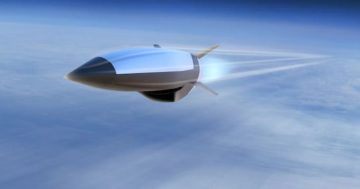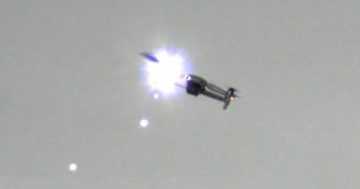
Electronic warfare systems identify, support, or disrupt adversary systems which operate in the electromagnetic spectrum, such as radars and communications systems. Photo: ADF.
Two Canberra-based companies have shared in $8 million contracts from Defence’s Advanced Strategic Capabilities Accelerator (ASCA) to develop innovative and advanced electronic warfare (EW) technologies for the Australian Defence Force (ADF).
Advanced Design Technology (ADT) and Penten were awarded contracts after they successfully participated in the AUKUS Innovation Challenge, a trilateral effort among the AUKUS construct to seek the best and most innovative solutions to shared EW challenges from industry and research institutions in all three countries.
Launched in March 2024, the AUKUS Innovation Challenge Series connects all three AUKUS partners to the best technologies, leveraging each nation’s comparative advantages and delivering cutting-edge capabilities.
The contracts will support the two companies to continue their work and will assist the development and demonstration of EW prototypes that address ADF’s operating requirements and show the contribution Australian industry can make in developing advanced EW capabilities, including as part of AUKUS Pillar II.
ASCA was launched in May 2023 under the Defence Science and Technology (DST) Group to transform the way breakthrough military solutions are delivered by rapidly translating innovative technologies into capabilities, and to accelerate delivery of these capabilities through innovation.
ASCA’s mission is to connect and streamline the defence innovation system by focusing on defined missions, by solving the most relevant and urgent capability problems, and by taking a more flexible and agile approach to procurement.
Electronic warfare denotes those capabilities designed to identify, support or disrupt systems such as radars and communications which operate in the electromagnetic spectrum, or to counter or deceive adversary systems trying to do the same.
Most ADF armoured vehicles, ships and aircraft now carry defensive or offensive EW systems, and these can provide an additional defensive layer for a platform, or can be used to disrupt or attack adversarial systems.
Minister for Defence Industry and Capability Delivery Pat Conroy said he looked forward to seeing the capabilities ADT and Penten would deliver for the ADF and AUKUS.
“The AUKUS Innovation Challenge Series is a powerful example of how ASCA is accelerating advanced capabilities for our ADF while ensuring local innovators are at the forefront of Australia’s growing sovereign industrial base,” he said.
“Through ASCA, the government is demonstrating how Pillar II is delivering for AUKUS militaries, in partnership with Australian industry.”
In a statement on LinkedIn, Penten welcomed the contracts with ASCA to deliver its TrapRadio device – Next Generation Electronic Deception (NGED).
It says its portable devices employ AI-powered multispectral, multidomain electronic deception technology designed to target adversary intelligence producing sensors and systems. It says these will provide an advanced capability for the ADF and protect the lives of troops and high-value assets.
Penten CEO Greg Barsby said, “We thank ASCA’s leadership under Professor Emily Hilder for their support of these lifesaving Australian innovations, and their commitment to creating export opportunities for Australian defence technology.”











